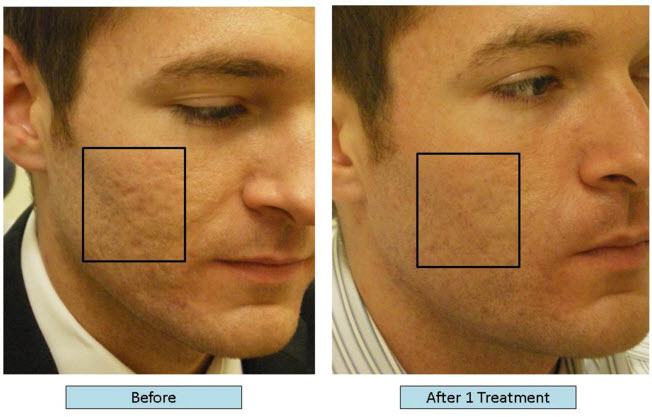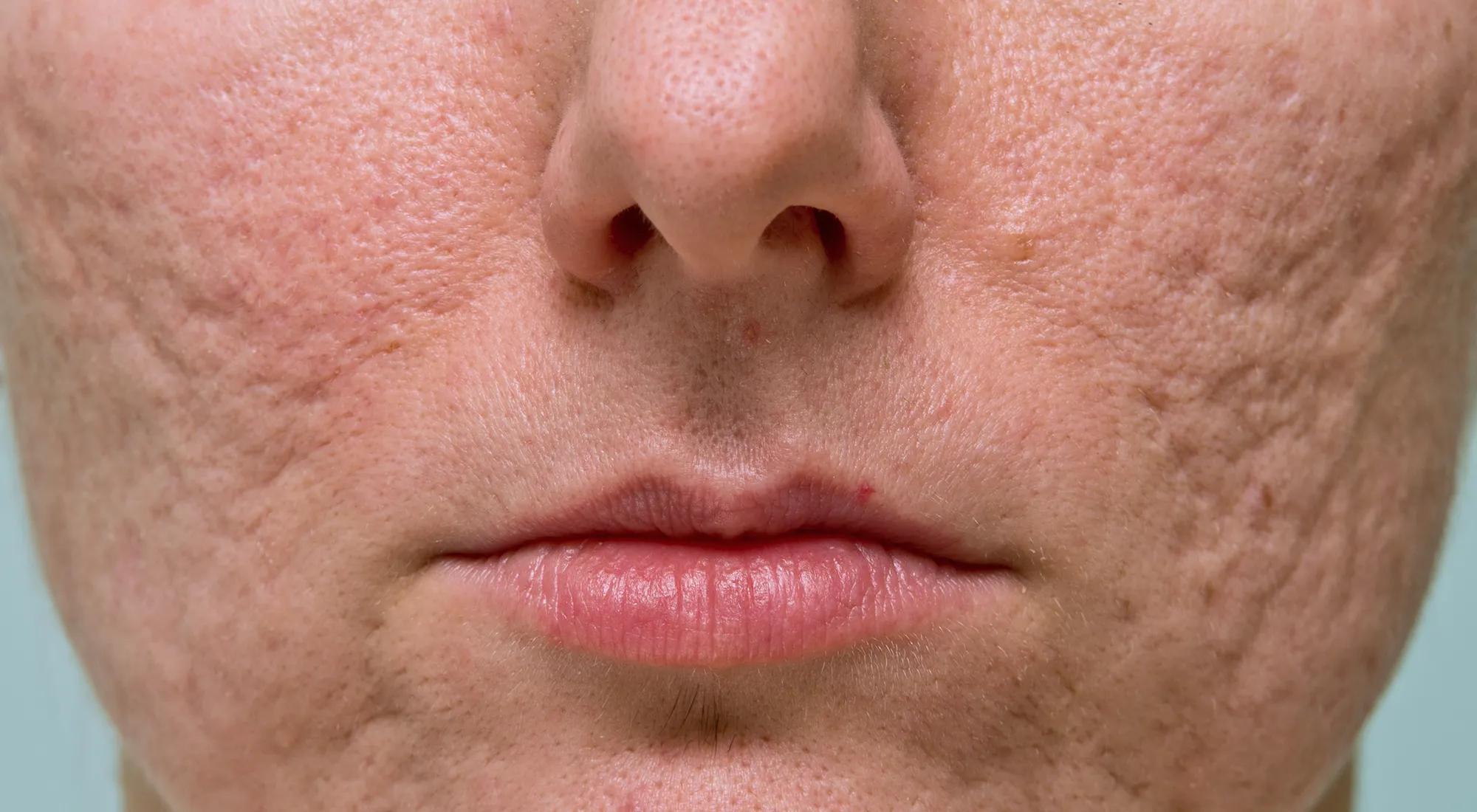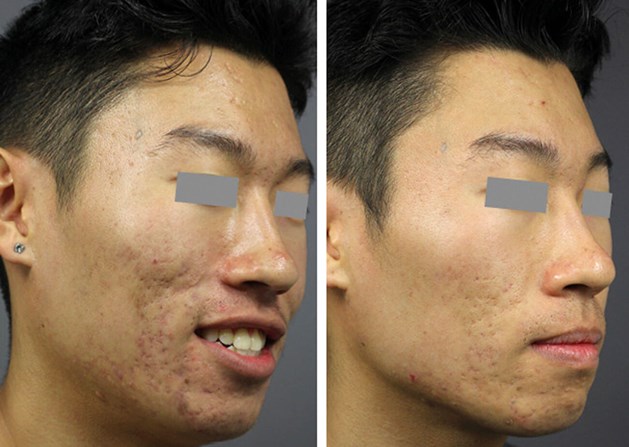Advanced Acne and Acne Scars Treatment: Say Goodbye to Blemishes
Advanced Acne and Acne Scars Treatment: Say Goodbye to Blemishes
Blog Article
Recognizing the Numerous Skin Problem and Effective Therapy Options for Acne Scars
Acne marks stand for a complex interplay of skin problems that substantially impact people' self-confidence and overall skin health and wellness. As we explore the landscape of acne mark administration, it comes to be obvious that the journey towards clearer skin may involve even more than simply topical options.
Kinds Of Acne Scars
Acne scars can materialize in various types, each requiring certain therapy methods. Both main groups of acne scars are hypertrophic and atrophic scars. Atrophic marks are identified by a loss of tissue, causing depressed areas on the skin. These marks are further categorized right into three subtypes: ice choice marks, which are deep and narrow; boxcar marks, which are larger and have distinct sides; and rolling scars, which produce a wave-like look due to unequal skin texture.
On the other hand, hypertrophic scars arise from an overflow of collagen throughout the recovery process, resulting in elevated locations on the skin. These scars are frequently solid and can differ in shade, occasionally appearing red or darker than the surrounding skin.

Root Causes Of Acne Scarring
Scarring occurs as an outcome of the body's all-natural healing response to swelling and injury triggered by acne lesions. When acne forms, it causes an inflammatory action, causing the release of different cytokines and growth factors that advertise healing. This procedure can often lead to excessive tissue formation or insufficient fixing, resulting in scars.
The primary causes of acne scarring include the extent of the acne itself, duration of the sores, and individual skin kinds. Severe inflammatory acne, such as cysts and nodules, is extra likely to cause scarring due to much deeper tissue damage. Furthermore, improper handling of acne lesions, such as selecting or squeezing, can intensify cells injury and inflammation, boosting the likelihood of scarring.
Genetic proneness also plays a considerable duty; individuals with a family members history of scarring are at a greater threat. Additionally, skin kind and shade can affect scar formation, as darker complexion might experience post-inflammatory hyperpigmentation, while lighter skin may establish atrophic marks.

Treatment Choices for Scarring
Efficient treatment choices for acne scarring vary depending upon the type and seriousness of the scars. Generally categorized into atrophic, hypertrophic, and keloid marks, these problems call for customized techniques for ideal results.
For atrophic scars, which are characterized by a loss of cells, therapies such as chemical peels, microdermabrasion, and laser treatment are typically employed. These methods promote skin revival and boost collagen manufacturing, thus improving skin texture. Subcision, a minimally intrusive treatment, can likewise be effective by damaging up coarse bands underneath the skin.
Keloid and hypertrophic scars can be more testing to deal with. Choices include corticosteroid shots to minimize inflammation and flatten the marks. acne scars treatment. In many cases, cryotherapy or laser treatment might be advised to reduce their appearance
Surgical alternatives are offered for severe scarring, where excision or skin grafting might be needed. It's important for people to talk to a dermatologist to analyze their certain scar kind and talk about one of the most appropriate treatment strategy. Combining several therapies commonly yields the most effective results, guaranteeing that each person's special skin problem is resolved efficiently.
Natural Remedy and Natural Solutions
All-natural solutions and home treatments can provide an easily accessible approach for people looking for to enhance the look of acne scars. Different active ingredients discovered in the home cooking area have demonstrated possible benefits in improving skin structure and advertising healing.
One prominent solution is aloe vera, known for its anti-inflammatory and comforting homes. Using fresh aloe vera gel directly onto the scars can assist enhance skin hydration and lower redness. Honey possesses natural anti-bacterial and moisturizing top qualities that can help in mark recovery. It can be utilized as a mask, left on for thirty minutes prior to rinsing.
An additional reliable choice is lemon juice, which works as an all-natural exfoliant and can lighten hyperpigmentation. It should be used cautiously, as it might create photosensitivity. Oat meal masks are additionally valuable; their mild peeling can assist remove dead skin cells while soothing irritation.
Important oils, such as tea tree oil and lavender oil, can further sustain mark healing because top article of their antimicrobial homes. It is important to carry out a patch examination before applying any kind of acne and acne scars treatment solution to make sure there are no unfavorable reactions. These all-natural services can be a complementary strategy in the trip to decrease acne scars.
Protecting Against Future Scarring
Embracing a proactive strategy to skincare can substantially reduce the danger of creating future acne scars. Normal cleaning, exfoliation, and hydration can assist keep skin health and wellness and protect against blocked pores.
In addition, avoiding the temptation to squeeze or choose acne sores is essential, as this can bring about inflammation and subsequent scarring. Instead, people should concentrate on applying topical therapies that advertise healing and decrease swelling. Active ingredients such as salicylic acid, benzoyl peroxide, and retinoids are known for their efficacy in handling acne and decreasing scars.

Lastly, preserving a healthy and balanced diet rich in anti-oxidants and remaining hydrated supports skin regeneration. By carrying out these safety nets, individuals can substantially decrease their risk of future scarring and promote general skin wellness.
Verdict
In verdict, a comprehensive understanding of acne scars, incorporating both hypertrophic and atrophic kinds, is important for effective treatment strategies. Consultation with a dermatologist stays essential to devise individualized methods that think about individual skin kinds and mark severity, inevitably improving the efficacy of mark administration techniques.
Acne marks represent an intricate interplay of skin problems that substantially influence individuals' self-worth and general skin health. The 2 primary classifications of acne scars are hypertrophic and atrophic scars. These scars are further categorized right into three subtypes: ice choice scars, which are narrow and deep; boxcar next scars, which are bigger and have well-defined sides; and rolling scars, which produce a wave-like look due to unequal skin appearance.
An extensive consultation with a skin specialist can aid identify the most ideal intervention, taking into account the person's skin type, scar intensity, and overall skin health and wellness.
Appointment with a dermatologist stays imperative to create tailored approaches that think about specific skin kinds and scar seriousness, inevitably boosting the efficacy of scar administration strategies.
Report this page